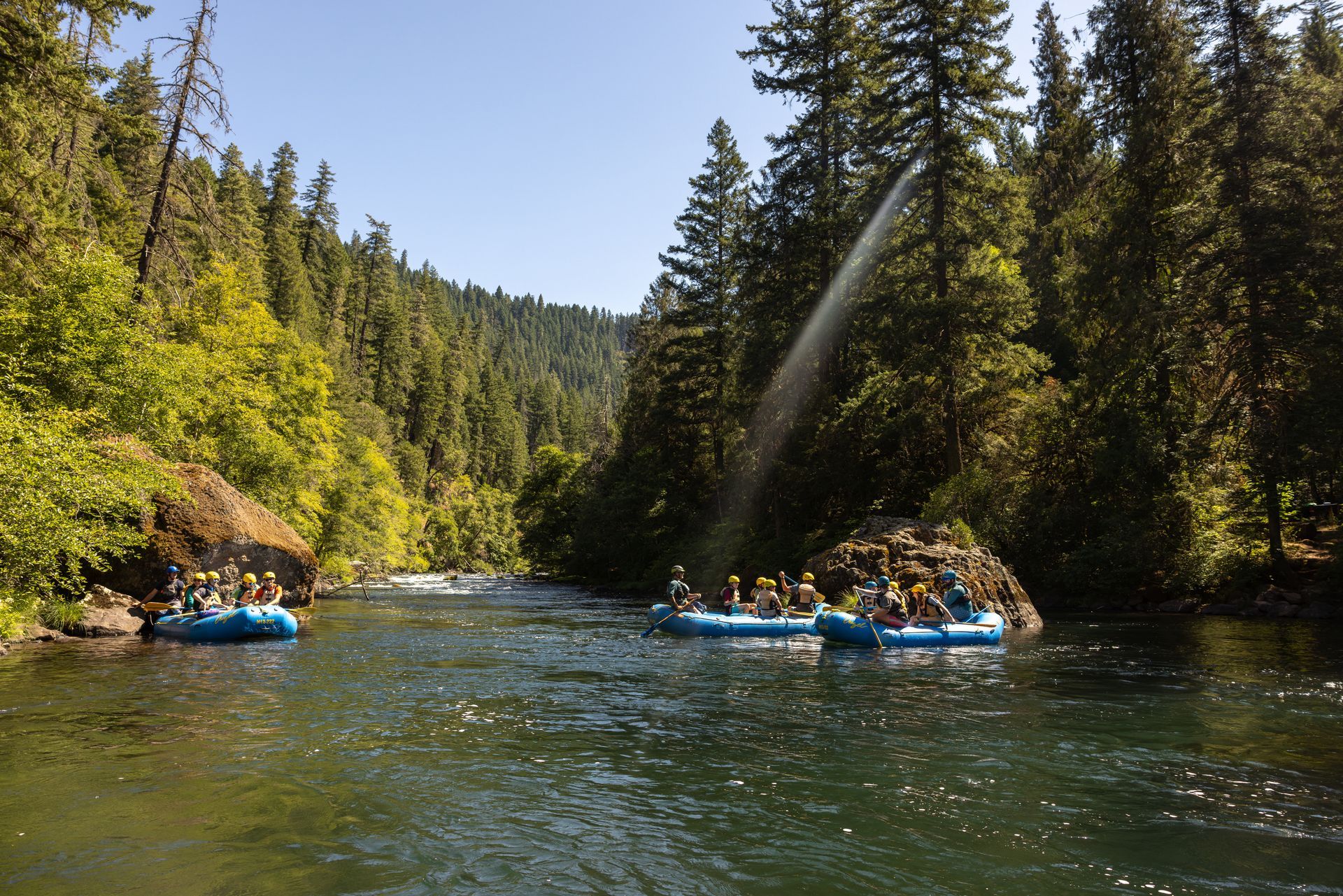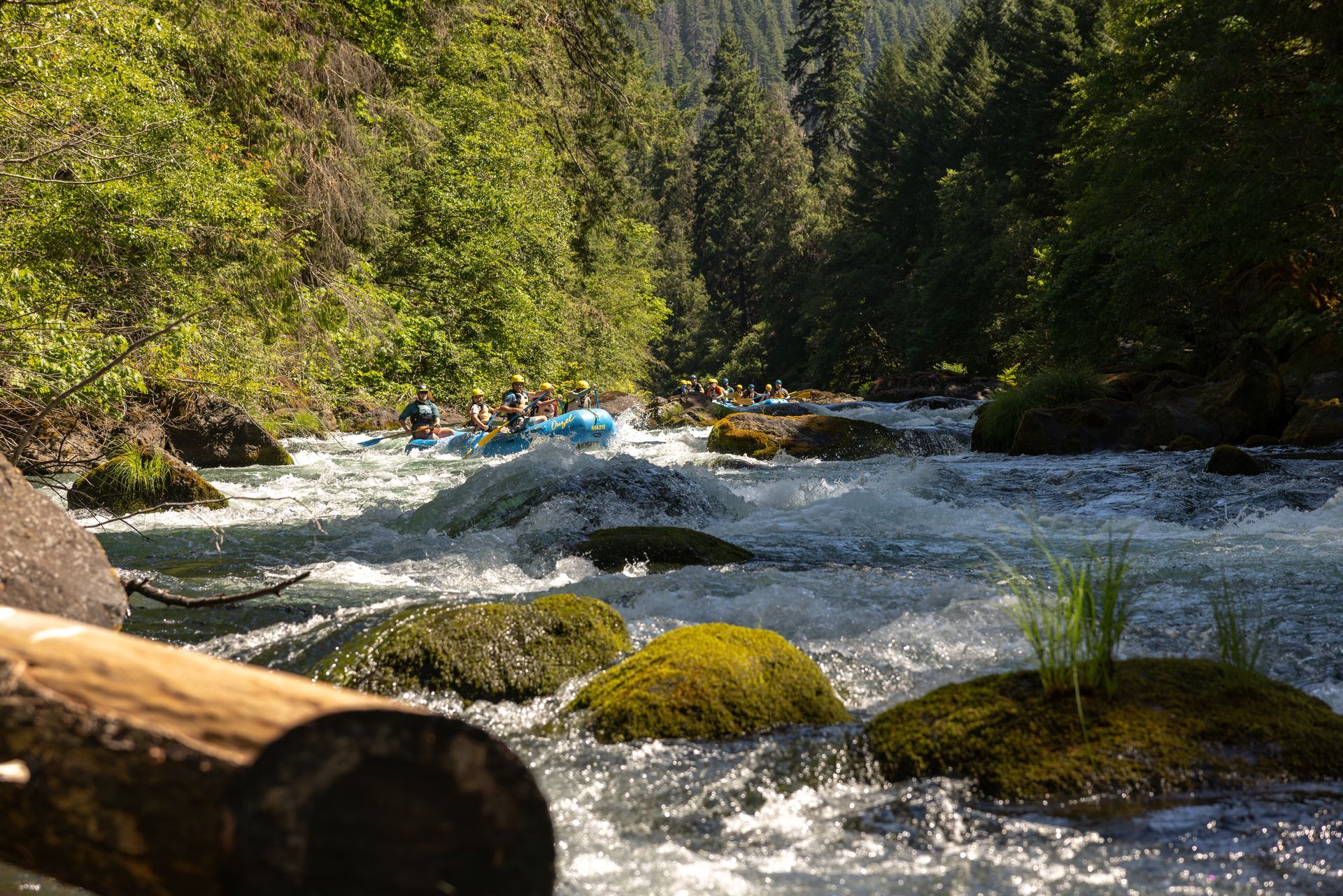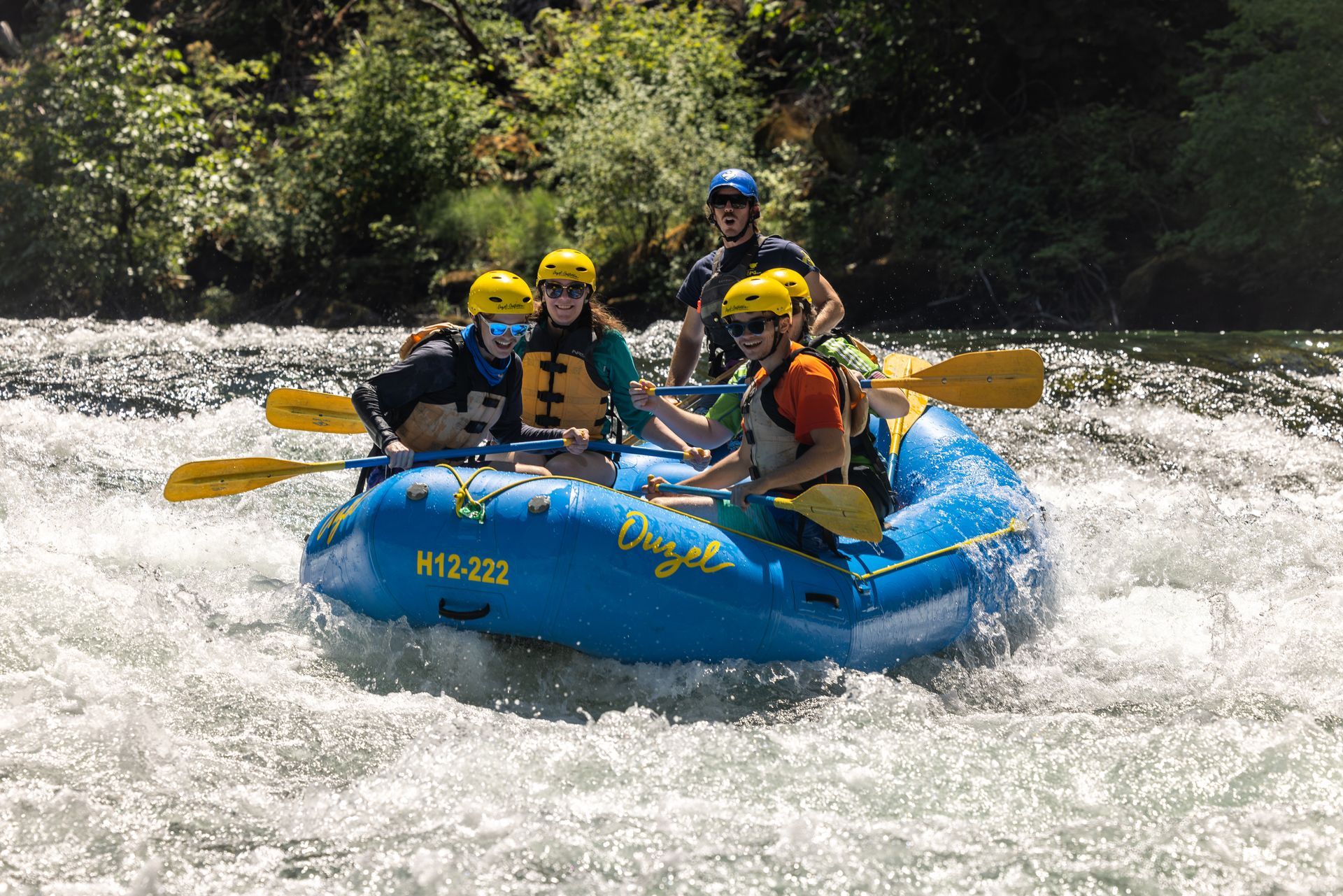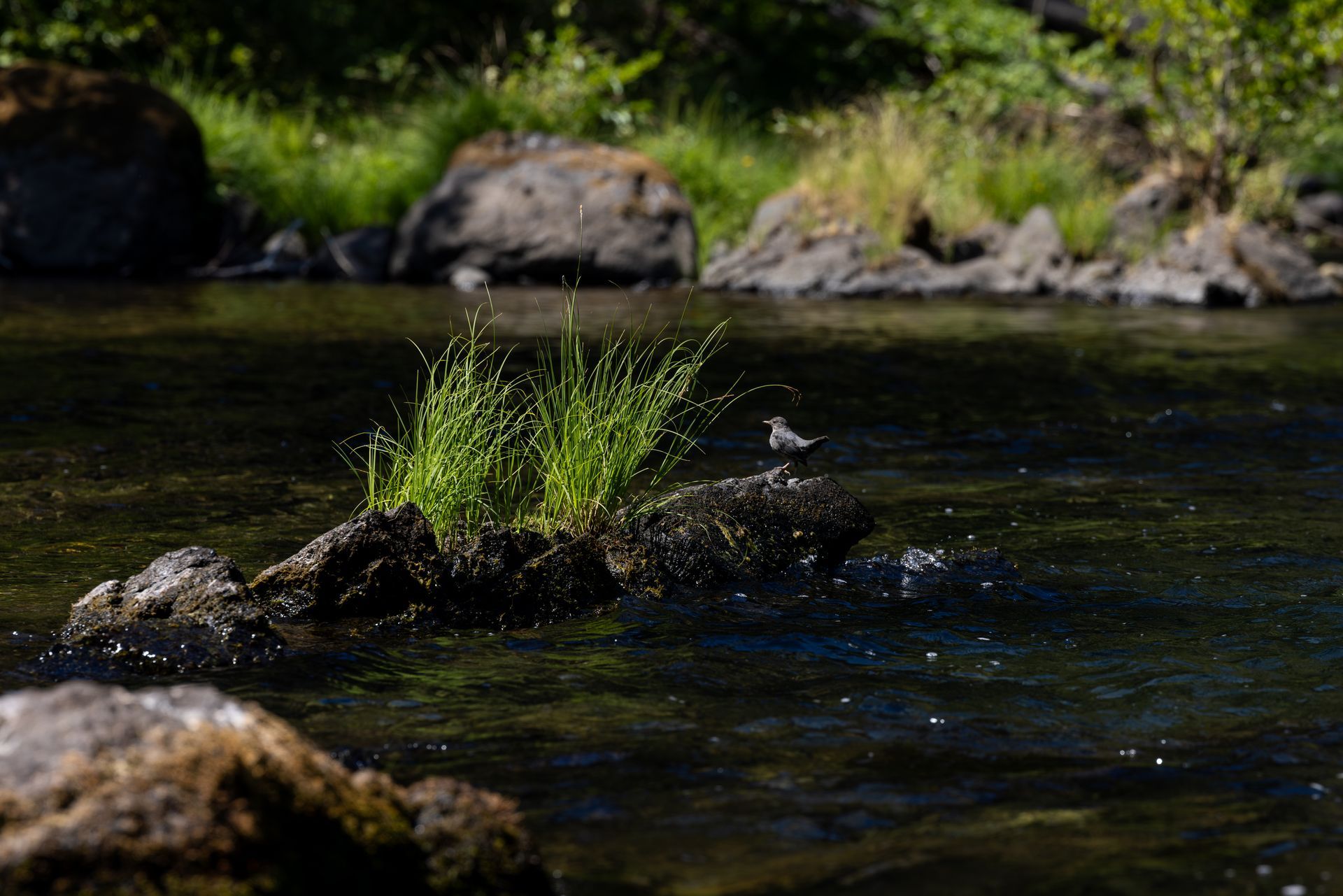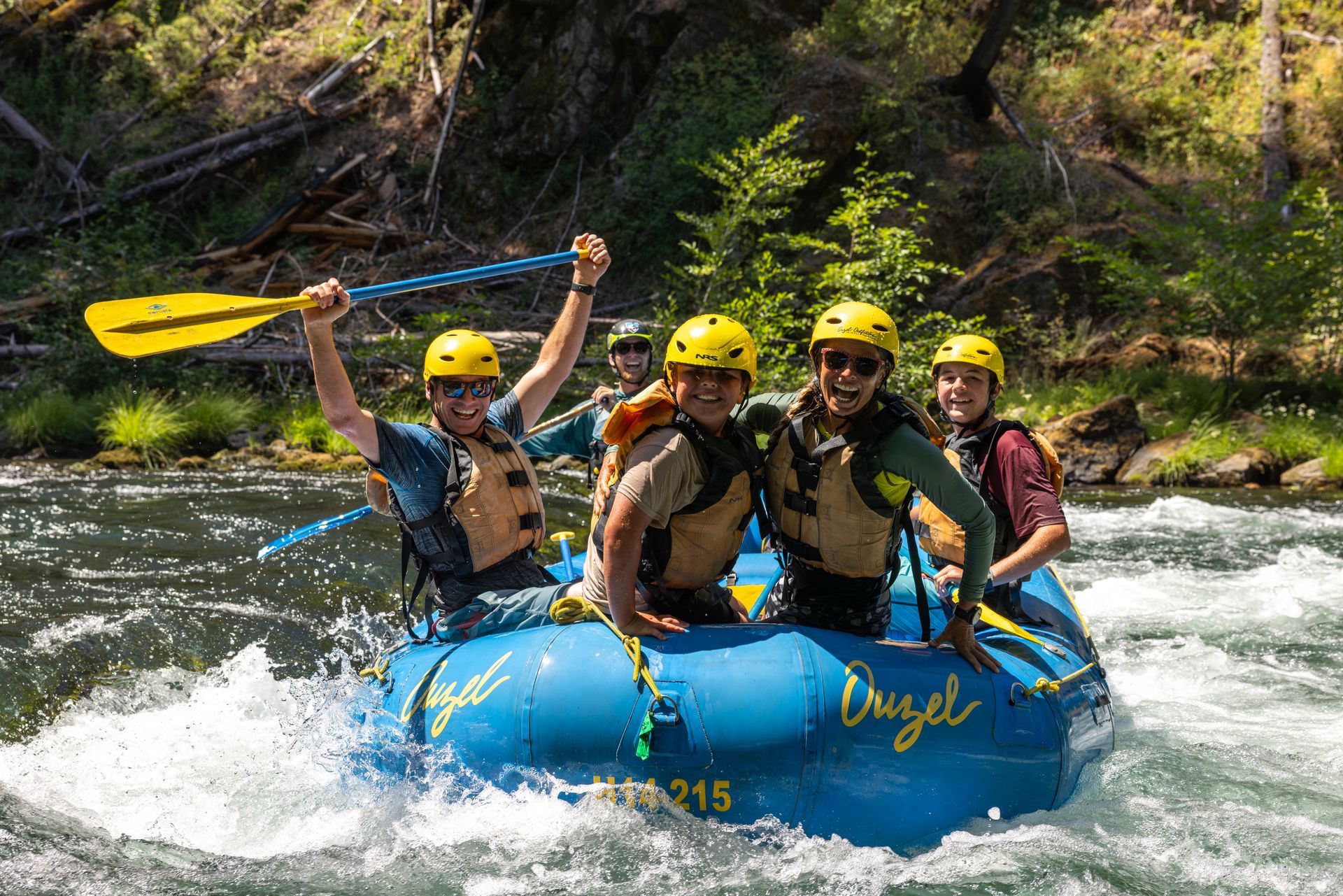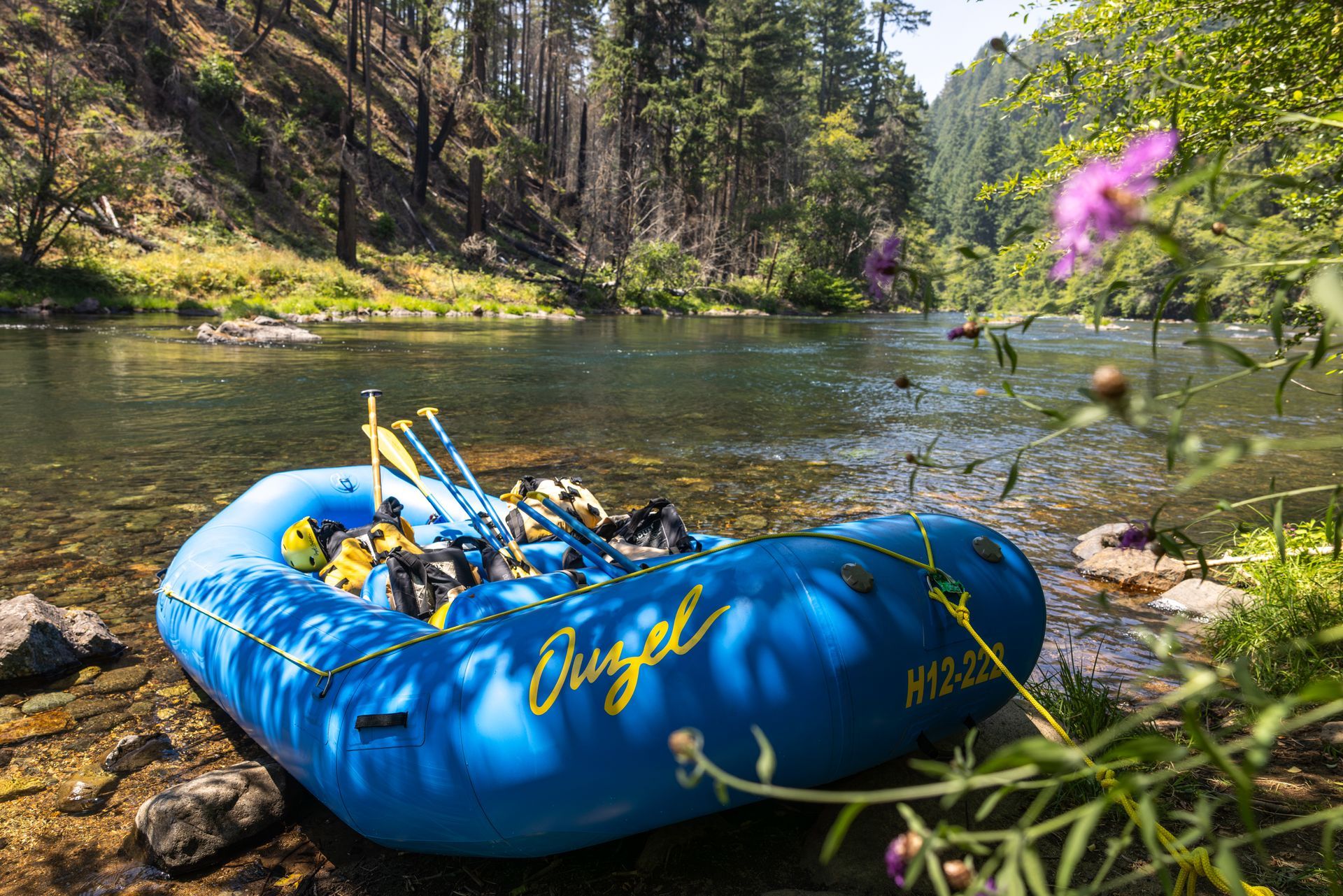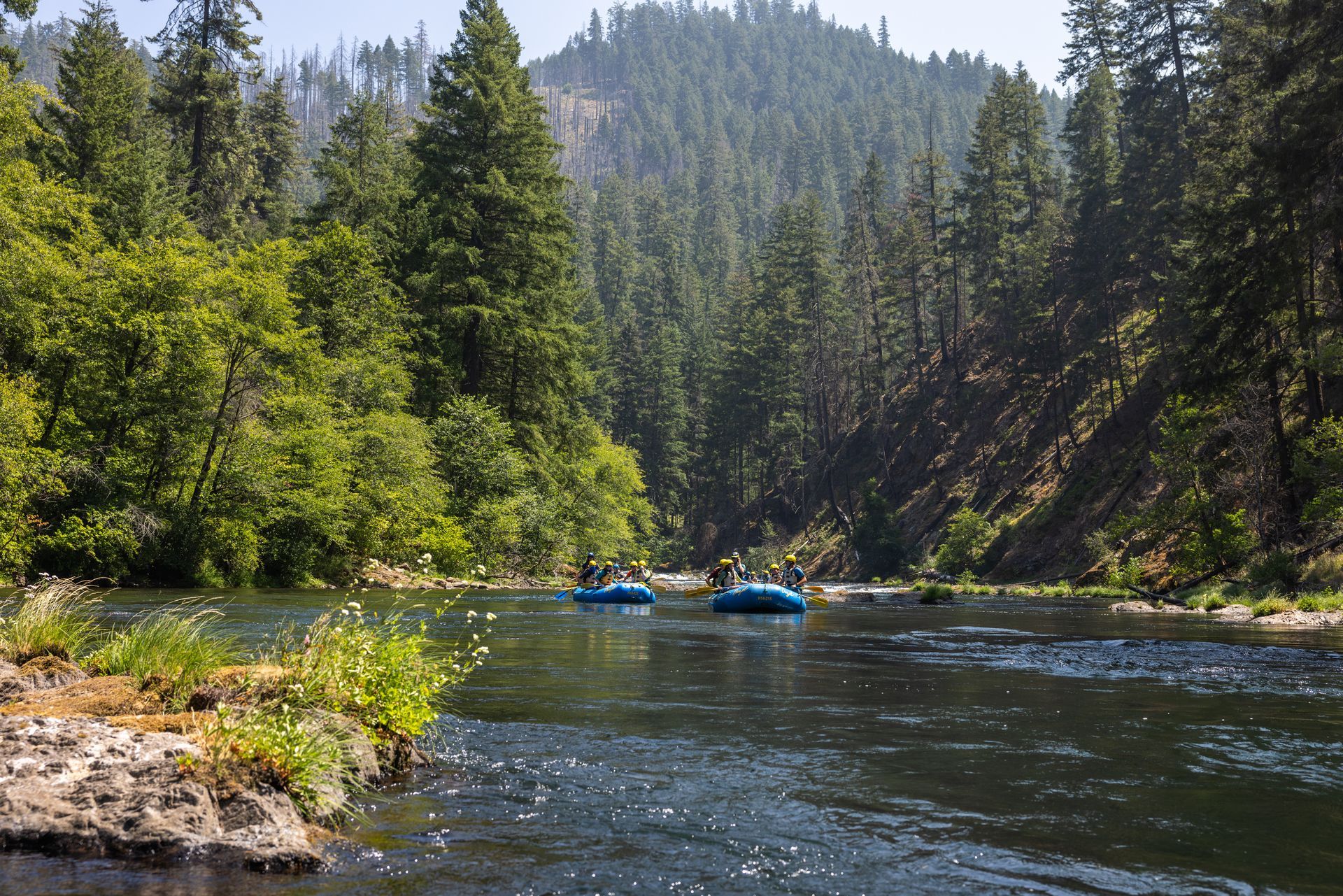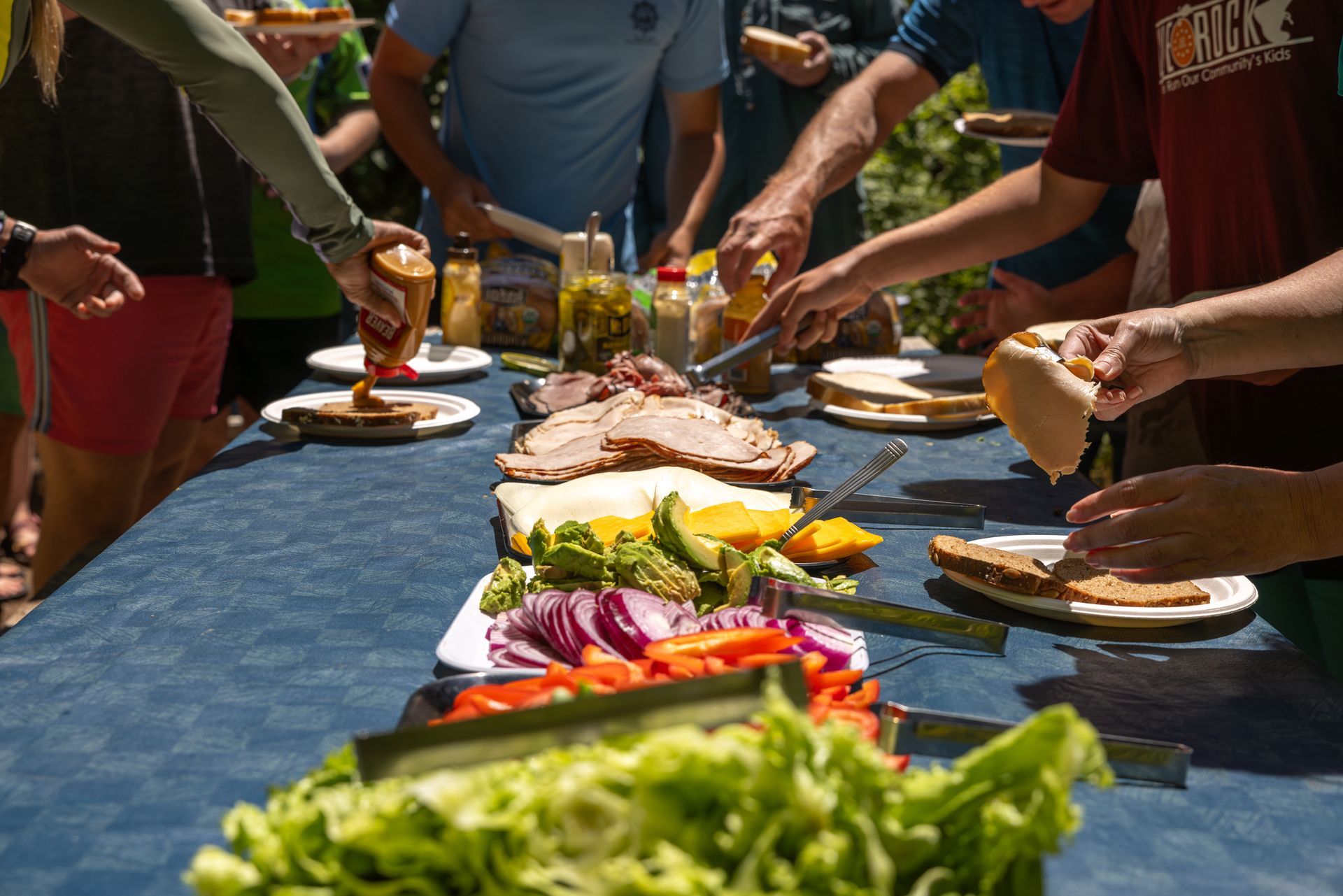North Umpqua River Rafting Trips
Classic Oregon Scenery with Exciting Whitewater Adventures
The North Umpqua River offers a combination of towering Douglas fir forests, crystal-clear water, and thrilling whitewater. This river is perfect for those seeking both excitement and scenery, with a steep, rugged canyon with dramatic gorges that frame the boulder-strewn rapids.
The North Umpqua River rafting trip is ideal for experienced rafters or adventurous beginners. We recommend an all-kayak, full-day adventure for those ready to take on the challenge. This trip showcases some of the best outdoor activities in Oregon, set against the backdrop of the state’s stunning natural beauty.
Trip Length: Full Day Trips
Rafting Season: May – July
Difficulty: Class III-IV
Minimum Age: 10

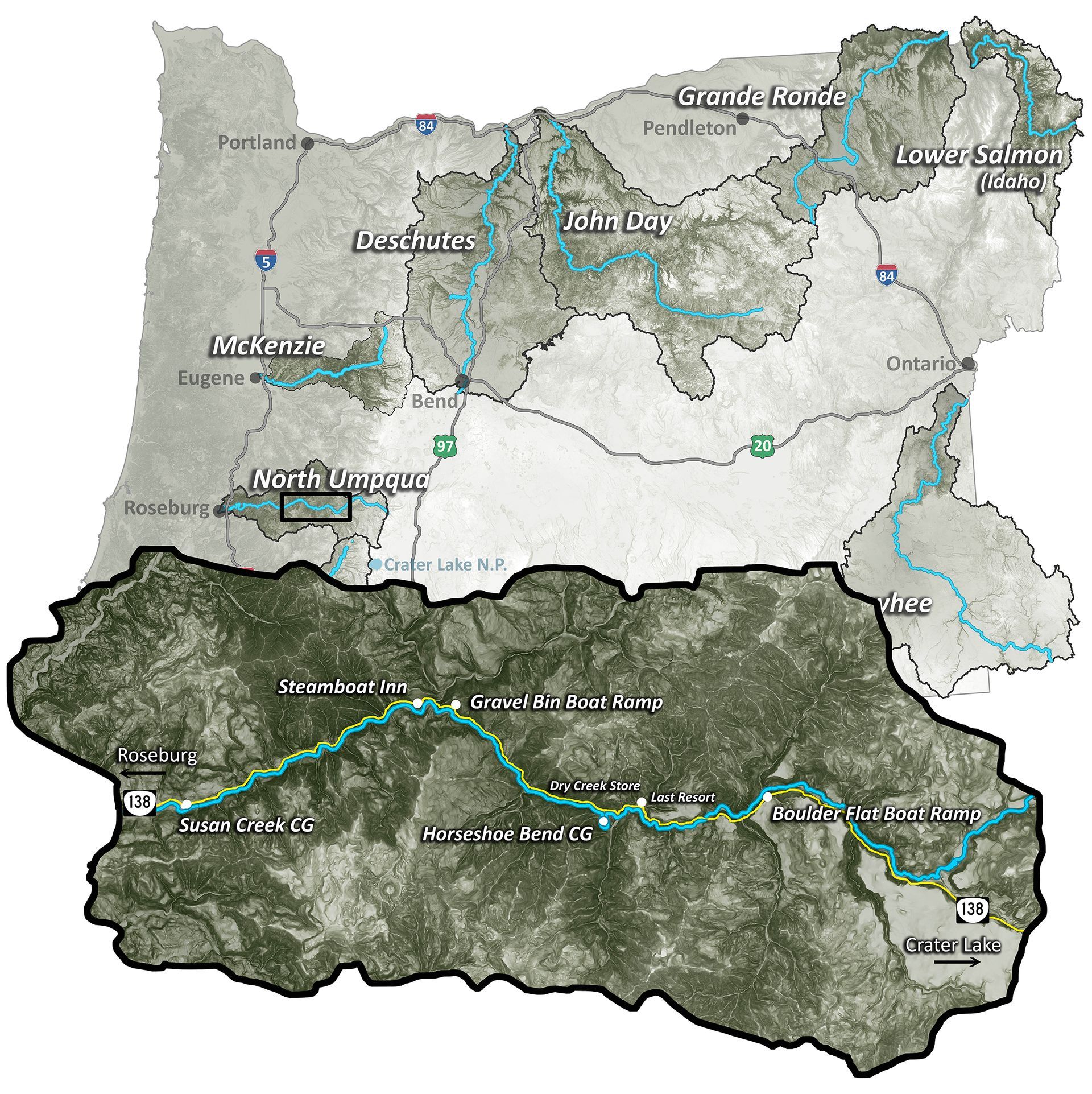
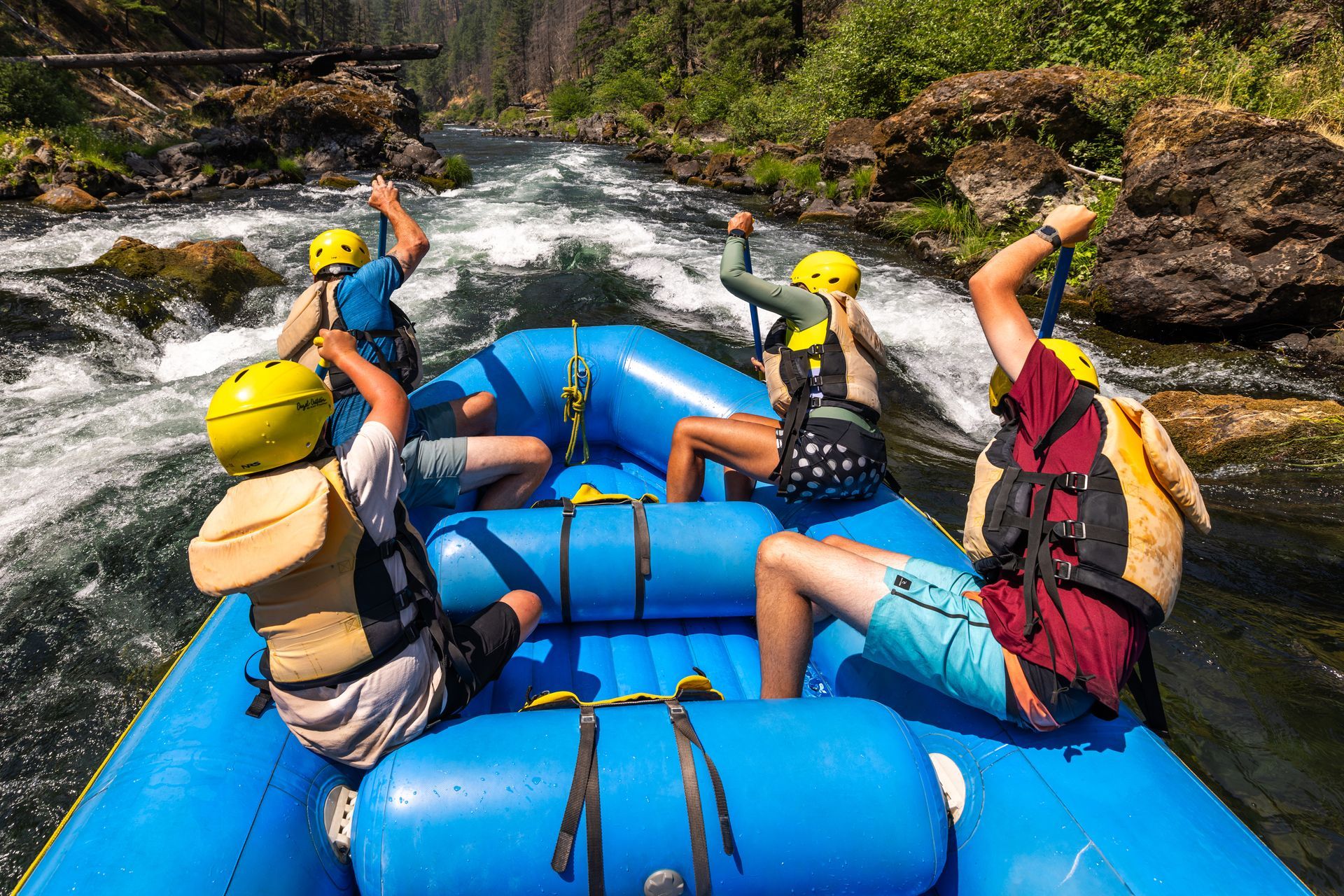
Full Day Trip
Beautiful and exciting
$159.00 (Adult)
$149.00 (Youth - 10 to 12)
The 1-Day trip runs 15 miles from Boulder Flat Campground to Gravel Bin Boat Ramp. One of the most exciting summer rafting adventures in Oregon and with postcard-perfect scenery, the North Umpqua River will quickly put a smile on your face. This trip is perfect for adventurous beginners, or those who have rafted the McKenzie or Deschutes and are looking for a "step up" in excitement.
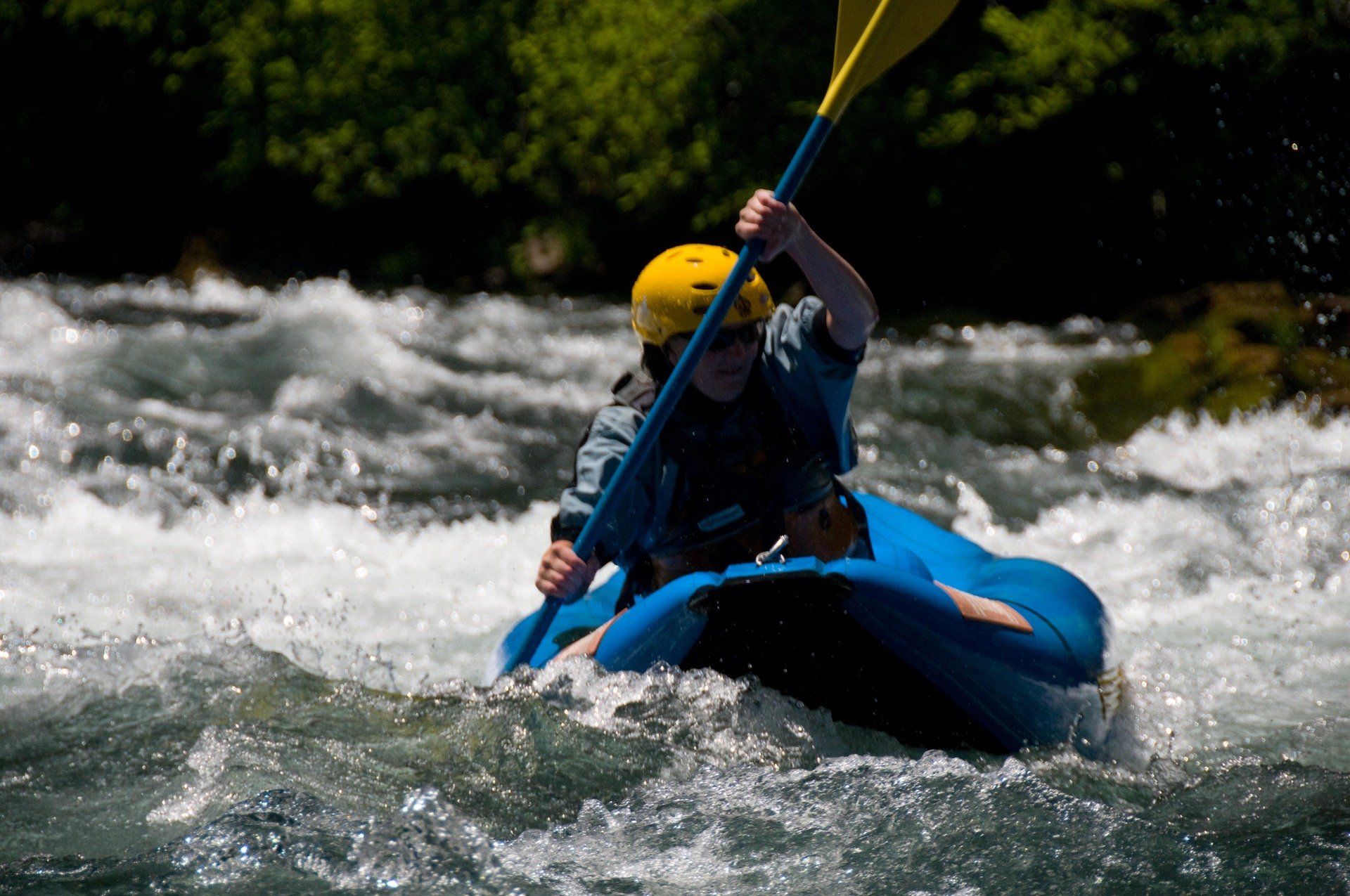
Full Day Kayak Trip
Put your skills to the test
$169.00 (Adult)
Minimum Age: 15
Offered late August through mid-September, this is the ultimate in excitement on the North Umpqua River. This trip features the opportunity to paddle single-person inflatable kayaks through numerous class II and class III rapids with a final exciting challenge at class IV Pinball Rapids. A minimum group size of 8 is required to book. Appropriate for experienced inflatable kayakers or adventurous beginners.
Scenic & Exciting
the north umpqua offers some
of the very best early summer
paddle rafting in oregon
all-inflatable kayak trips take keep
the fun rolling as water levels decrease later in the summer
North Umpqua River Travel & Area Information
Weather Conditions
The weather is usually warm and sunny from mid June through August. Rain is likely in May and possible anytime of year and river is chilly. We provide plenty of cool-weather rafting gear when conditions warrant.

Getting There
Meet us at Gravel Bin Boat Ramp
Full Day Trip - 10:00 a.m.
Transportation & Shuttles
Your vehicle will be parked at Gravel Bin Boat Ramp. While the entire parking lot is visible from the HWY, unfortunately, theft from vehicles is not unknown along this stretch of the HWY 138. We highly recommend leaving valuables at home or at the very least, locking them in your trunk, glove box or keeping them out of sight. Wallets and keys can be stored in the dry bags available on each raft or may be left in our van during the trip.
Gravel Bin Boar Ramp Location Map
Where to Stay
On the River
Steamboat Inn - Best! A famous country Inn located near our meeting location. Excellent dining. Lodge and cottages. ½ mile from our meeting location. 800-840-8825
Diamond Lake Resort - Cabins & motel. 50 minutes east of our meeting location. (541) 793-3333
Umpqua's Last Resort -
Wilderness Cabins & RV Park, canvas wall tents, glamping and RV sites
(541) 498-2500
Roseburg (45 minutes west of Gravel Bin)
Best Western Garden Villa Inn - Roseburg. 45 minutes west of our meeting location. 800-528-1234
IdleYld Lodge: B&B - Great Reviews. 15 minutes west of our meeting location. 541-496-0088
Area Activities
At 1,932 feet, Crater Lake is the deepest lake in the United States, and arguably the most spectacular. Set within the collapsed caldera of ancient Mount Mazama, Crater Lake offers a striking view into the Cascade Mountain’s explosive past. Drive the Rim Loop, visit Crater Lake Lodge, walk through the Pumice Desert, and take a boat tour to Wizard Island.
Known for its variety of high quality wines, the valley is cool enough to produce Burgundian wines such as Pinot Noir and Chardonnay, yet warm enough for growing Bordeaux varieties like Cabernet Sauvignon and Merlot. Gewurtztraminer and Reisling are a notable addition to the list.
Take a driving tour through the savannas of SW Oregon to see lions, tigers, bears, and more. Located in Winston, 10 miles SW of Roseburg, off Hwy 42.
In the Umpqua National Forest, this alpine lake offers boating, fishing, camping and resort facilities. Located just off Hwy. 138, five miles north of Crater Lake National Park.
Known as the “Lightning Rod of the Cascades”, a very difficult hike to the summit of this glacially-eroded horn affords incredible views of the surrounding terrain. Trail head located on Hwy. 138, about two miles north of its junction with Hwy 230.
Outstanding Remarkable Values
Wild & Scenic River Designation - October 28, 1988
Learn about what makes the North Umpqua River so special.
-
Cultural
Radiocarbon dating places prehistoric occupation of the North Umpqua River as early as 6,300 years ago, and the presence of the time-sensitive artifacts indicates the occupation may go as far back as 8,000 years. This long period of occupation resulted in the formation of a number of sites within the river corridor that have unusual characteristics when compared with other sites in the region. Visitors were initially drawn to the Steamboat area within the North Umpqua River corridor because of the excellent fishing. The first known fish camp constructed on the river in the 1920s was located in this vicinity. Also found in this area is Mott Bridge, an Oregon Historical Civil Engineering Landmark. Constructed by the Civilian Conservation Corps in 1935-36, it may be the only surviving example of three such structures from that time in the Pacific Northwest.
-
Fisheries
The combination of large summer run steelhead, fly-fishing only restrictions and majestic scenery has drawn anglers from all over the world. The river serves as needed habitat for a variety of resident and anadromous fish species, including summer and winter steelhead, fall and spring chinook, coho sea-run and cutthroat trout, and is distinguished from other rivers by the large and consistent numbers of native (non-hatchery) fish in the run. The North Umpqua summer steelhead fishery is considered to be one of the most outstanding on the West Coast.
-
Recreational
Renowned for outstanding salmon and steelhead fishing and exhilarating whitewater, the North Umpqua provides river running opportunities for paddlers of all skill levels, from placid waters to roaring rapids. The best months for enjoying whitewater are May, June and early July. Almost 34 miles of the North Umpqua have been designated as a wild and scenic river and this section has been set aside for fly-only fishing. The 79-mile long North Umpqua Trail parallels the river and offers visitors challenging hiking and mountain biking experiences. The area is readily accessible to a broad segment of the population and provides a variety of river-related recreation, such as boating activities, fly angling, developed and dispersed camping, day use picnicking and swimming, horseback riding, hiking, sightseeing, bicycling, photography, nature study and scenic driving. Visitors from over the world travel through the North Umpqua River corridor to enjoy these major destination attractions.
-
Scenic
This truly distinctive canyon landscape is generally characterized by a combination of jade green rushing water, vertical rock cliffs and spires within a mosaic of mountain meadows and hemlock forests. Adding to the natural scenic quality of the North Umpqua River corridor are the locations of numerous prominent geologic features of columnar basalt, large basalt rock boulders and spires which are currently managed as the Rocks Geologic Area. Few river systems in the region expose as much of the volcanic and geologic history of the formation of the Cascades in one straight, east-west direction.
Highway 138 through the corridor provides access to Diamond Lake Recreation Area and Crater Lake National Park. This highway has received both national and regional recognition for its exceptional scenic quality and accessibility to a myriad of recreational and interpretive opportunities.
-
Water Quality
The North Umpqua River sustains a dependable water flow of both high quality and quantity. Components that combine to produce the high water quality are low turbidity (except during peak flow periods), low levels of contaminants and pollutants, cool water temperatures and stable minimum instream flows. The water quality and quantity of the North Umpqua River is the foundation for the other outstandingly remarkable values, providing a steady flow for both recreational uses and the maintenance of fish and aquatic life.

